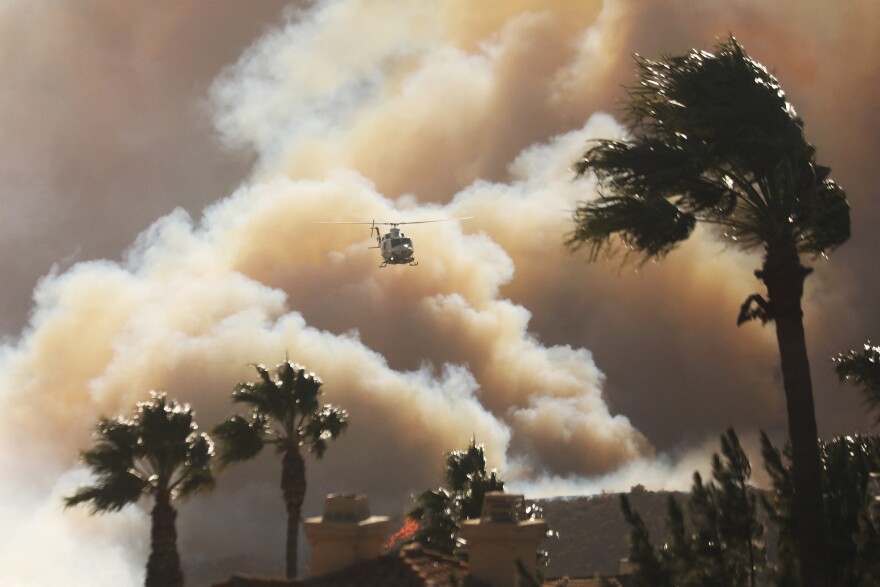Truth matters. Community matters. Your support makes both possible. LAist is one of the few places where news remains independent and free from political and corporate influence. Stand up for truth and for LAist. Make your year-end tax-deductible gift now.
Palisades and other Southern California fires could be most expensive in US history

The deadly fires burning in Southern California collectively could become the most expensive wildfire disaster in U.S. history, one leading climate scientist said, underscoring the devastating effects of human-caused climate change that primed the region for a major fire.
At least four separate fires were burning in the metropolitan Los Angeles area on Wednesday after igniting and being whipped by extreme winds, destroying more than 1,000 structures, killing at least two people and forcing tens of thousands to evacuate.
“These fires will likely be the costliest in history, not the deadliest, and that is the only silver lining right now,” said Daniel Swain, a climate scientist with UC Agriculture and Natural Resources and UCLA.
But why are the fires so big during winter? Swain said a “triple whammy” of climate and weather effects are causing the fires to burgeon in size.
After two of the wettest years on record in Southern California, the region’s mountains are blanketed with nearly double the average amount of tall grasses and chaparral.
That was followed by the hottest summer on record for parts of the region, which significantly dried out the abundant vegetation. In September, major heat waves further dried out fuels. Plus, parts of coastal Southern California have seen the driest and hottest start to winter on record.
Swain said that much of the area has burned due to having “the most thirsty atmosphere on record since October 1st.”
These conditions created the perfect scenario for a wildfire to grow out of control and spread into populated areas. The fires became uncontrollable when Santa Ana winds — common for the winter but especially extreme this week — picked up. Winds across the foothills and valleys were as strong as 70 mph, with gusts touching 100 mph higher in the mountains.
The Southern California fires remind Swain of the Camp Fire, which leveled the town of Paradise near Chico in 2018 and was the deadliest fire in California history, killing 85 people.
“This is the same story of what happened in Paradise,” he said. “That occurred in November in Northern California in a very wet part of the state that hadn’t yet received seasonal precipitation.”
Swain sees clear links between human-caused climate change — driving extreme dry fuel conditions and record warmth — and the fires raging in Southern California. A warming world means wetter wet periods, hotter temperatures, and more extreme droughts. This flip-flopping, both at the sub-seasonal and interannual levels, will stoke wildfires when ignited.
“It’s not just that drier conditions are perpetually more likely in a warming climate; it’s that this oscillation back and forth between states is something that is particularly consequential for wildfire risk in Southern California,” he said.
In a warming climate where global emissions continue to rise, he said, “there’s every indication” that the wettest years will become even more soaked, summers will continue to warm, and autumn will get drier, which means that this cycle of Southern California burning could likely be commonplace.










